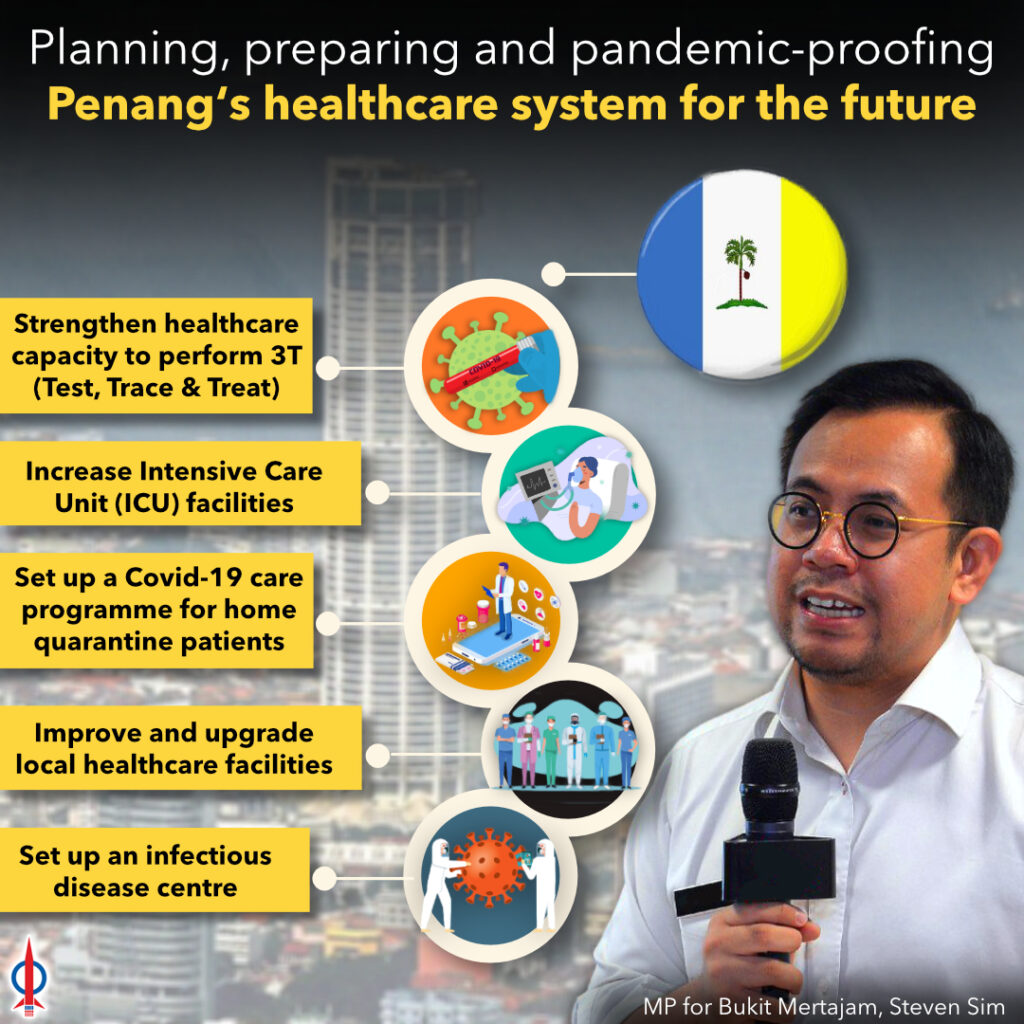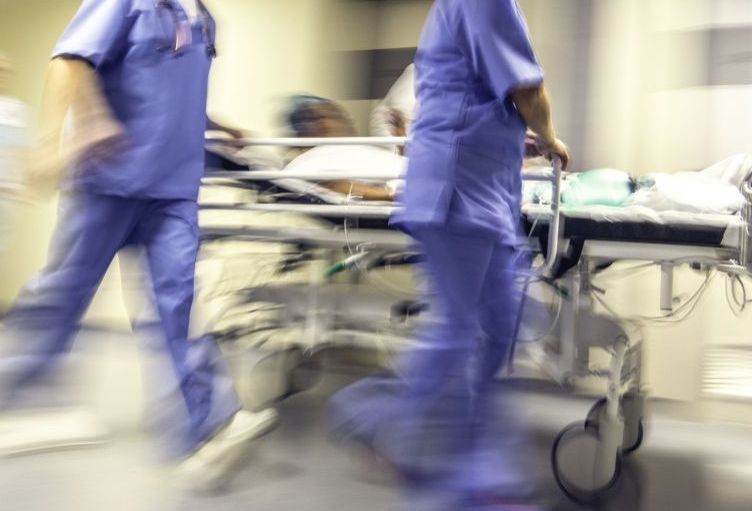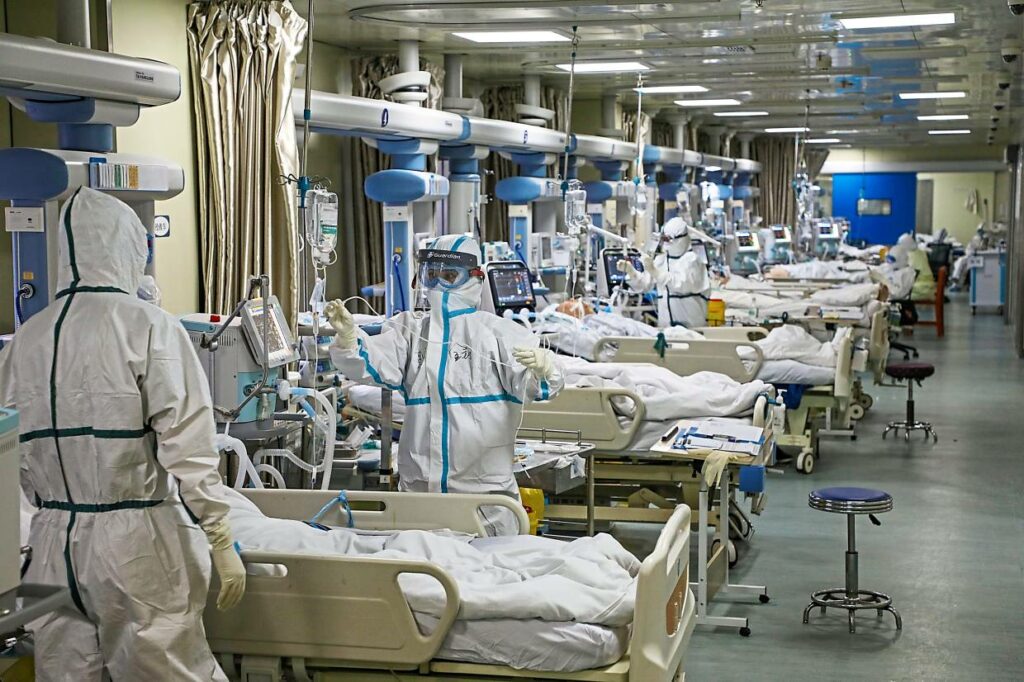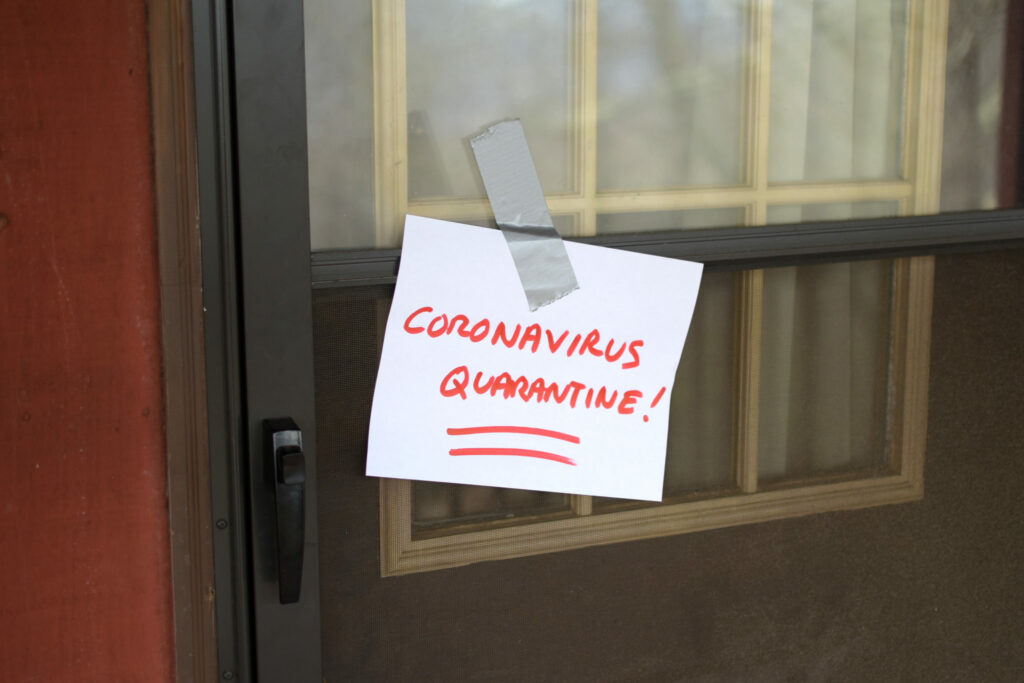Media statement by MP for Bukit Mertajam and Penang-Federal Government Coordinator for Covid-19 Management, Steven Sim on 7 October 2021:

Covid-19 in Penang: Preparing ahead
Penang is in a third consecutive week of downward trend in the number of positive cases as well as deaths since Epidemic Week 37 (EW37: 12-18 September 2021), continuing to Epidemic Week 39 (EW39: 26 September – 2 October 2021).
Our average daily cases dropped 23.5% in EW37, 20.5% in EW38 and a further 30.95% in EW39. From a record high daily cases of 2,474 cases on 8 September 2021, Penang daily cases dropped to 623 on 6 October 2021.
Adult vaccination has already achieved 96.1% for the first dose and 86.5% for the second dose. The percentage however could be much higher than reported because essentially there are no more names to be called on MySejahtera. One possible explanation could be, those who took their vaccines from the private market did not have their MySejahtera status updated. This is a nationwide issue which the Ministry of Health has to resolve quickly.
Adolescent vaccination in Penang is also finishing soon. When Penang started our adolescent vaccination on 23 September 2021, we were the slowest in terms of vaccination rate among the states. When we started with only 4,177 doses on that first day, I immediately set a goal of 10,000 doses a day for the state health department.
Today due to the efforts of our frontliners, we not only achieved 10,000 doses a day, we are also now Top 5 among the fastest for adolescent vaccination rates in the country.
As I have mentioned in the past two weeks, one of my aims is to increase our healthcare capacity. And one of the critical facilities we had to work on was our ICU beds. From 69 ICU beds since late July, we managed to increase 32 more ICU beds within three weeks starting EW37. Today our ICU beds stand at 101.
Since 11 September 2021, Penang received an additional RM19.4 million from the Ministry of Health to support our effort to fight Covid-19.
Preparing our healthcare system for the future
It goes without saying that while our positive cases and deaths are going down, we must continue to be on our guard to keep to the SOP.
We must learn the lessons from our neighbouring countries where cases suddenly spiked despite a brief respite and even with a large vaccinated population.
I want to propose five actions for both the federal and state government to prepare Penang to face Covid-19 or any pandemic in the future:
1. Strengthen our healthcare capacity to do 3T – test, trace and treat – quickly if there is a rise in new cases.
This includes facilities, equipment as well as personnel. Instead of locking down everyone with MCO, the healthcare system should be able to promptly identify and isolate patients for treatment.

For illustration purposes only.
2. Increase our ICU facilities.
When the pandemic started in March 2020, Penang only had 26 ICU beds out of which 6 were reserved for Covid-19 patients. In July till September 2021 when there was a big spike in Covid-19 cases in Penang, we had 69 ICU beds. As mentioned above, today, we have 101 ICU beds for Covid-19, which is about 5.7 beds per 100,000 population, with the national figure being 4.7.
Here are all the figures for all other states in Malaysia:
- Melaka (9.4)
- Negeri Sembilan (7.8)
- Kedah (5.9)
- Pahang (4.8)
- Kelantan (4.7)
- Perak (4.5)
- Perlis (4.3)
- Sabah (5.8)
- Sarawak (5.4)
- Selangor (3.0)
- Terengganu (3.0)
- Johor (2.9)
(Note that the above are Covid-19 ICU beds, total ICU beds are generally slightly higher in number)
To benchmark with pre-Covid-19 data on critical care bed capacity in other countries:
- Brunei (13.1)
- Singapore (11.4)
- South Korea (10.6)
- Thailand (10.4)
- Japan (7.3)
- Indonesia (2.7)
- Philippines (2.2)
(Reference: Phua J, Faruq MO, Kulkarni AP, Redjeki IS, Detleuxay K, Mendsaikhan N, Sann KK, Shrestha BR, Hashmi M, Palo JEM, Haniffa R, Wang C, Hashemian SMR, Konkayev A, Mat Nor MB, Patjanasoontorn B, Nafees KMK, Ling L, Nishimura M, Al Bahrani MJ, Arabi YM, Lim CM, Fang WF, Asian Analysis of Bed Capacity in Critical Care (ABC) Study Investigators, the Asian Critical Care Clinical Trials Group . Critical care bed capacity in Asian countries and regions. Crit Care Med 2020;48:654-662.)
From our observation, total deaths dropped 1.57% in EW37, 24.4% in W38 and then stagnated in EW39. This is an indication that we still have a gap in our ICU beds and it should be resolved as soon as possible.

For illustration purposes only.
3. Set up a home care programme for home quarantine Covid-19 patients
This can be doe by mobilising private medical practitioners to provide medical and health monitoring services either via telemedicine, phone calls or if necessary, home visits. Home quarantine patients should not be left unattended because not many have the know-hows to deal with medical conditions arising from diseases such as Covid-19. Providing consistent home care will also minimise cases of Brought-In-Dead (BID) due to sudden escalation of a patient’s condition at home.
The state health department had briefed about 100 private practitioners in the state recently and many of them had indicated interest to be part of the home care/home monitoring programme. At this point we need to quickly resolve the legal, logistical, and procedural obstacles in order to activate this network of doctors to be part of our fight against Covid-19.

4. Improve and upgrade local health facilities
These include the district health office, district hospitals, klinik kesihatan etc. because treatment and disease control essentially take place in these facilities instead of in Putrajaya or even KOMTAR.
For example, the upgrades of facilities such as Hospital Sungai Bakap, Hospital Balik Pulau and Hospital Bukit Mertajam are long overdue.

5. Set up an infectious disease centre in Penang
This is so that we can tap into the healthcare ecosystem and talent pool in Penang to deal with infectious diseases such as respiratory diseases like Covid-19 or even vector-borne diseases like dengue which is our long standing healthcare problem.

A Malaysian Healthcare Blueprint for the 21st century
In general, it is also high time for the Ministry of Health to formulate a Malaysian Healthcare Blueprint which will enable our healthcare system to deal with 21st century healthcare challenges and demands. For Penang, such a blueprint can be adapted to our Penang2030 vision to suit the local context. We must not waste the opportunity of this crisis to rethink and reform healthcare so that we will be more prepared to respond to the next crisis quickly and effectively.
Last year, at the end of the first Movement Control Order (MCO 1.0), I wrote that there are two conditions for relaxing movement restrictions, i.e., low statistics and high system: we must have low number of Covid-19 cases but at the same time high healthcare system preparedness.
The government must understand that the reduced case number today is really for us to buy time to prepare our healthcare system to deal with any potential future waves.



